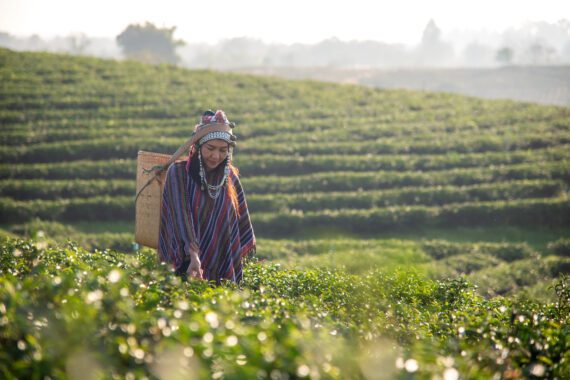By Michele Learner
Each year, several global food security organizations work together to publish The State of Food and Nutrition Security in the World (SOFI) report. This year’s report, covering calendar year 2020, was released July 12.
As Bread for the World has previously noted, global hunger rates, described in the report as the global prevalence of moderate or severe food insecurity, have increased every year since 2014. But food insecurity grew far more quickly in 2020, a fact that is unlikely to surprise anyone. The global COVID-19 pandemic brought much of the world to a standstill for a large portion of 2020, causing enormous economic disruption. The increase in hunger is estimated to be similar to the total increase of the previous five years.
By the end of 2020, then, the world’s several decades of progress in reducing the rate of hunger had been set back significantly but not entirely reversed. Up to 161 million people who had not faced hunger in 2019 were food insecure in 2020, bringing the global total to as many as 811 million people.
Malnutrition was virtually unchanged from 2014 until the onset of the pandemic, but the proportion of those affected, referred to in the report as the prevalence of undernourishment, climbed to approximately 9.9 percent in 2020, compared with 8.4 percent a year earlier.
Hunger rates increased most sharply in Africa, which added 46 million additional people to the number facing hunger. Africa now has a hunger rate twice that of any other region. It is also the only region with increasing numbers of children with long-term malnutrition (stunting). Asia and Latin America/Caribbean also have more people living with hunger, with increases of 57 million and 14 million, respectively.
The pandemic has put the world increasingly off-track to end hunger by 2030, with projections suggesting that 30 million additional people will face hunger in 2030. Only one-quarter of countries are on track to end malnutrition by 2030. About half of all children live in countries that are not on track. The gender hunger gap also increased in 2020, with women increasingly more likely to face hunger than men.
According to the SOFI report, the major causes of hunger—in addition to the pandemic—include underlying extreme poverty, barriers in the food system such as prices for nutritious foods that are too high for many families to afford, and the drivers of fragility, such as conflict and climate change, that Bread discussed in our 2017 Hunger Report, Fragile Environments, Resilient Communities.
The paths forward are familiar ones: scaling up efforts to strengthen resilience in climate-affected areas; integrating humanitarian assistance, development programs, and peacebuilding efforts in areas where hunger is exacerbated by conflict; identifying ways to reduce the cost of nutritious foods; putting in place strong social protection programs for the most vulnerable people; and adopting and using effective approaches to promoting equity regardless of race, ethnicity, gender, religion, or other “identity” characteristics of individuals and communities.
Despite the many weaknesses and failures in the pandemic response thus far, there have also been innovative and successful efforts in a variety of local and national contexts. They underline the message that the world does know what to do and, of course, they show the immense impact that even relatively modest improvements in policies or programs can achieve. We can hope that as humanity confronts climate change and the likelihood of future pandemics, many more people will become advocates against hunger and other barriers to reaching the Sustainable Development Goals. This is the most life-affirming option in the face of all that individuals, families, cities, and wider regions have lost.
Michele Learner is managing editor with Bread for the World Institute.



